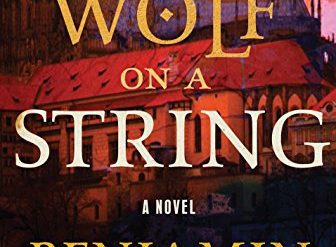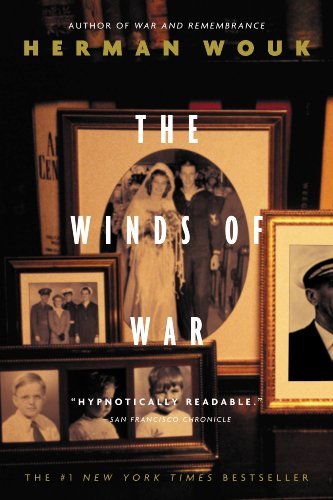
Imagine trying to tell the story of World War II through the lives of a single family. After all, the war engaged more than 100 million people from 30 countries in a conflict that raged for years on three continents. Yet half a century ago a remarkable author named Herman Wouk set out to do exactly that for American readers. In two volumes totaling 2,300 pages, Wouk follows US Navy Captain Victor Henry, his wife, his two sons, the women they marry, his young daughter, and a handful of other characters as they are tossed about by “the winds of war.” The 900-page story by that name encompasses the years 1939 through 1941. And it’s followed by another 1,400 pages in a companion volume spanning the remaining years of the war. These classic World War II novels remain a compelling read fifty years after their publication.
A “battleship man” denied a ship at sea
Victor (“Pug”) Henry is career Navy. A graduate of Annapolis, where he starred on the football team. Veteran of World War I. A “battleship man,” wedded to the glorious history of the ironclad behemoths that ruled the seas for half a century. Pug is a man on his way up to flag rank, but in 1939 he’s merely a commander. And as all hell starts breaking out in Europe, the Navy brass won’t give him command of a ship at sea. Instead, they assign him to succeed an Annapolis classmate as US Naval Attaché in Berlin. And this is but the first of many posts and special assignments Pug is forced to take on as American entry into the conflict draws ever closer. His is a dream deferred.
The Winds of War (World War II #1 of 2) by Herman Wouk (1971) 898 pages ★★★★★
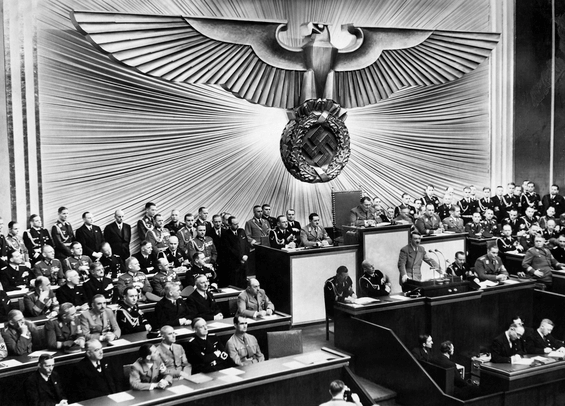
A career Navy man with a front seat on the war
What Pug doesn’t appreciate is that the Chief of Naval Operations—and the President personally—have given him a front seat on the war in a series of special assignments. Witnessing Hitler speaking in the Reichstag. Reporting face-to-face to Franklin Roosevelt on German war capabilities. By FDR and Winston Churchill’s side at the historic summit where they issue the Atlantic Charter. Tagging along under fire on a near-fatal British bombing mission over Berlin. Serving as an interpreter for Roosevelt’s personal representative in meetings with Adolf Hitler and Hermann Göring as well as with Benito Mussolini. Witnessing a tank battle thirty miles from Moscow on the Russian front. Meeting Joseph Stalin. And much more. Perhaps more than any other individual, Pug Henry witnesses close-up the expansion of the European war as it mushrooms into a global conflict. Yet all he wants after his promotion to captain is to command a battleship.
One family’s experiences in this classic World War II novel
Rhoda Henry
Pug and Rhoda have been married for more than a quarter-century as the world erupts into war. A dutiful Navy wife, she has stood by him as he moved, ever so slowly, up the ranks in the service. But as US entry into the conflict draws closer, and Pug leaves for extended overseas assignments, Rhoda grows increasingly restless. At last she succumbs to the attentions of an American industrialist, Dr. Palmer (“Fred”) Kirby. The expanding network of government agencies involved in mobilizing US industry for war at length recruits Kirby into the nascent American effort to develop an atomic weapon. (The Manhattan Project had not yet been formed as The Winds of War comes to an end.) And when Pug finally arrives at Pearl Harbor to take command of the ship he has been assigned, it’s not yet clear that Rhoda will join him there.
Warren Henry
Byron Henry
The younger son, Byron, known as Briny, avoids enlisting as long as possible. He sets out for Italy to study Renaissance art, winding up in the Siena villa of the famous scholar Aaron Jastrow, author of the runaway bestseller A Jew’s Jesus. Briny becomes infatuated with Jastrow’s assistant—his niece, Natalie—and accompanies her to Warsaw. There, and on a side trip to a village near Kraków, they witness the German invasion of Poland on September 1, 1939. Eventually, Briny returns to the States. His father persuades him to sign up for submarine school. And in the final chapters of the novel, Briny is in the Pacific, driving his skipper nuts with passive-aggressive glee. But Briny, we learn—first, in Poland with Natalie, and later in combat off the Philippines—is resourceful and courageous. And it’s those qualities that ultimately lead Natalie to marry him.
Madeline Henry
The baby of the Henry family, Madeline, is nineteen when the novel opens. She persuades her father to allow her to take on an internship at CBS Radio in New York City. But the internship with a famous broadcaster leads to a job as his assistant. It’s she who secures the man’s interviews with the celebrities of the day. Madeline grows into adulthood at the apex of the day’s media communications. Later, she accompanies her boss, Hugh Cleveland, on a world tour of American military bases. And, to the chagrin of her family, she has taken a lover by the conclusion of the book.
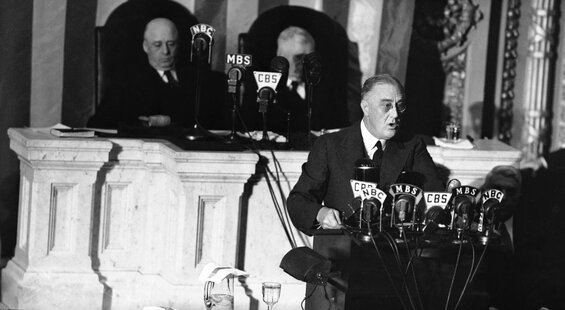
Others in this engaging cast of characters
As you can see, Pug and his family experience far more of the war than most Americans during the fatal years 1939 to 1941. But Wouk broadens the scope of his story through several other key characters.
Aaron and Natalie Jastrow
After Briny returns to the United States, Natalie Jastrow remains with her uncle in Italy. She struggles to overcome the obstructionism of Italian officials and the foot-dragging of antisemitic US consular officials to secure papers for her uncle to leave before the US and Italy end up at war with each other. And as the novel comes to an end, they’re still stuck in Italy, but they are three now. Natalie is married to Briny and has given birth to his son. They’re under the watchful eye—and, we hope, the protection—of a senior German diplomat who was a favorite former student of Aaron’s at Yale.
Pamela and Alistair Tudsbury
Alistair Tudsbury is a celebrity broadcaster for the BBC, a British version of the legendary American journalist Edward R. Murrow. Now growing old, he works with his daughter, Pamela, as his assistant. Together, they travel to Berlin, Moscow, Washington, and other important cities. For a time, Pamela enlists in the Women’s Auxiliary Air Force (WAAF), tracking Nazi aircraft during the Battle of Britain. On board ship en route home to London from the United States, Pamela meets Pug. Eventually, the two tumble into an affair that burdens the strait-laced Navy captain with guilt.
Leslie Slote
A brilliant former Rhodes Scholar, Leslie Slote is an American Foreign Service officer who is posted in turn to Paris, Warsaw, Washington, and Moscow. For years, he has been smitten by Natalie Jastrow. For a time, they are engaged to be married. But even after she spurns him for Byron Henry, Slote remains involved in her life. He plays a pivotal role in securing the clearance for her and her uncle to leave Italy. (Only the facts on the ground prevent that from happening.)
Franklin Roosevelt
Although many historic personalities enter the stage in this classic World War II novel, FDR emerges most clearly as a character in his own right. Pug comes to the President’s attention after writing an incisive analysis of the prospects for war in 1939. Soon, Roosevelt summons him to the first of several face-to-face meetings and dispatches him personally on assignments to circumvent the Department of State. But other real-world figures appear as well, including Winston Churchill, Adolf Hitler, Benito Mussolini, and Hermann Göring. Also making appearances are Harry Hopkins, General George Marshall, and Admiral “Bull” Halsey, among others.
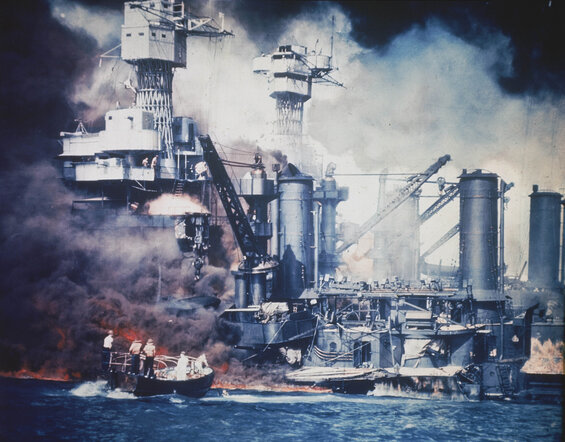
Narrative that conveys the grand sweep of the war
But even the sprawling cast of characters in The Winds of War cannot possibly portray the grand sweep of a massive historical event such as World War II. Wouk solves this problem in two ways.
Historical narrative
The author’s command of history is sure-footed. In smoothly flowing narrative passages, Wouk describes the rush of events that engulf his characters. His account lacks only the hidden facts that came to light years later as classified materials first came to the light of day. For example, he accepts the then widely accepted view that FDR triggered the Japanese attack on Pearl Harbor by embargoing oil and scrap iron sales to Japan. In fact, FDR had argued strenuously against doing so. The decision was made during his absence from Washington by a high-ranking State Department official. It was a fait accompli when the President returned to the capital.
World Empire Lost by General Armin von Roon
Wouk invents a senior Wehrmacht general named Armin von Roon who was convicted as a war criminal at Nuremberg. While in prison years after the war, von Roon writes a massive account of the German role in World War II. And Pug Henry, by then a retired admiral, translates and excerpts the work. Chapters from World Empire Lost alternate with Wouk’s own narrative account and the story that unfolds in the novel.
Like so many of his colleagues in the Nazi hierarchy, von Roon casts blame elsewhere for the German attacks on Poland, the Soviet Union, and the West. He is unapologetic throughout, regarding war as beyond the bounds of morality or ethics. Yet there is considerable insight in what he writes. For instance, he is especially thoughtful, if abusive at times, about the many mistakes Adolf Hitler made in the conduct of the war (even though he continues to regard him as a genius). And he waxes eloquent about the brilliant leadership displayed by Franklin Roosevelt. In fact, in von Roon’s comparison of the two men, Hitler routinely comes off second best.
About the author

From the 1950s to the 1970s, Herman Wouk (1915-2019) was one of America’s most popular and successful writers. (His name is pronounced “woke.”) He is best remembered for his 1951 novel, The Caine Mutiny, which won the Pulitzer Prize and was produced as a film three years later starring Humphrey Bogart. But in many ways Wouk’s masterwork was his two-volume series on World War II, The Winds of War (1971) and War and Remembrance (1978). Wouk died in 2019 at the age of 103.
For more reading
I’ve also reviewed the sequel to this novel: War and Remembrance (World War II #2 of 2) by Herman Wouk (Two World War II novels brilliantly convey the scope of the conflict).
You might also enjoy:
- The 10 best novels about World War II
- 10 top nonfiction books about World War II
- 15 good books about the Holocaust, including both fiction and nonfiction
- 7 common misconceptions about World War II
- The 10 most consequential events of World War II
- Top 20 popular books for understanding American history
And you can always find my most popular reviews, and the most recent ones, plus a guide to this whole site, on the Home Page.


